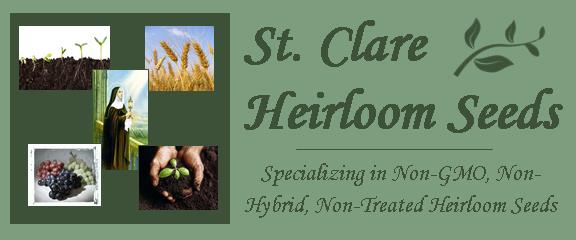Ohio State University Extension
Hot beds and cold frames are used by Heirloom / Open Pollinated vegetable gardeners for propagating vegetables for the garden. Hot beds are used for starting the Heirloom / Open Pollinated vegetable plants and cold frames for tempering or hardening vegetable plants to outdoor conditions before transplanting. For most home vegetable gardeners the same frame can serve both purposes. The principle difference between the two is that hot beds have a heat source. Traditionally, hot beds and cold frames were built even with or slightly below ground level and covered by glass sash. Present-day frames are often completely above ground and plastic covered because film is generally available at a reasonable cost.
Hot beds and cold frames should always be located on well-drained soil, free from flooding during heavy rain. A location with a southern exposure and adequate wind protection on the north and west is ideal. Locate close to water and heat sources.
Almost any size hot bed can be electrically heated; however, most are from 5 to 6 feet wide and 6 to 12 feet long. The ultimate size is dependent on planting requirements, kinds of plants, number of plants and spacing. If glass sash will be used to cover, the length is usually in multiples of 3 feet; however, plastic coverings do not limit dimensions.
Most beds are constructed with wood sidewall’s; however, more permanent beds can be made of poured concrete or masonry blocks. Wooden walls and supports should be painted or treated with copper napthenate but not creosote or pentachlorophenol, as both are harmful to plants.
Excavate the bed area 8 inches deep. After walls are built, apply 6 inches of gravel or coarse sand for drainage. Add a layer of burlap or other material to prevent sand from sifting down. Add a 2-inch layer of sand on which the heating cables are laid. Two more inches of sand should be applied over the heating cables and the sand covered with 1/2 inch hardware cloth to protect the cables. Place either propagating medium or flats over the hardware cloth. Construct the back or north wall 18 inches above the level at which the heating cable is placed. Side walls usually slope toward the front about 1 inch per foot of width. A 6 foot wide bed will be 12 inches high in front. The footing for concrete or block walls must be placed below the frost line. Nail a 1 x 4 inch board to the outside top edge of the back and side walls. (The sashes extend over the edge of the front wall to shed water.) The boards serve as weather stripping and reduce heat loss between walls and sashes. Bank soil against the outside of the walls to prevent air leakage. The sash or plastic-covered frames, sometimes hinged at the back, are lifted in front and braced open for ventilation.
Units of this nature may be of most any form, from arch, A-frame to quonset, with the structure of wood or thin-wall electrical conduit. These frames are inexpensive to build and easy to construct. The frames are covered with 4-mil clear polyethylene plastic film designed to be rolled down the ridge or up the sides to allow for adequate ventilation.
Although steam, hot water and even manure have been used to heat hot beds, most home gardeners use electric cables. A thermostat is needed to control the temperature in the bed. Although heating cables operate on either 240 or 120 volts, most small beds of 10 feet or less can be satisfactorily operated on a 120 volt system. One 60 foot cable is required for a 6 x 6 foot bed and two 60 foot cables for a 6 x 12 foot bed. The cables should be arranged in the beds. Heating cables and thermostats are available from mail order and garden supply centers.
A soil temperature of 70 to 75 degrees F is ideal for germination of most seeds. Following germination, adjust the temperature to suit the particular plant. Cool-season vegetable garden crops such as Heirloom / Open Pollinated lettuce, cabbage and cauliflower require an air temperature during the day of 60 to 65 degrees F. Warm-season vegetable crops such as Heirloom / Open Pollinated tomatoes, peppers, and melons require an air temperature of 65 to 75 degrees F. Night temperatures are usually 5 to 10 degrees F lower than day air temperatures. If the air temperature in the bed goes above 85 degrees F, ventilation will be necessary. The beds usually require ventilation on all mild, sunny days. Electrically-heated beds tend to dry the medium rapidly, and attention to watering is a must. The soil should be kept moist at all times but not wet. Apply water in the morning so the plant foliage will dry before evening.

